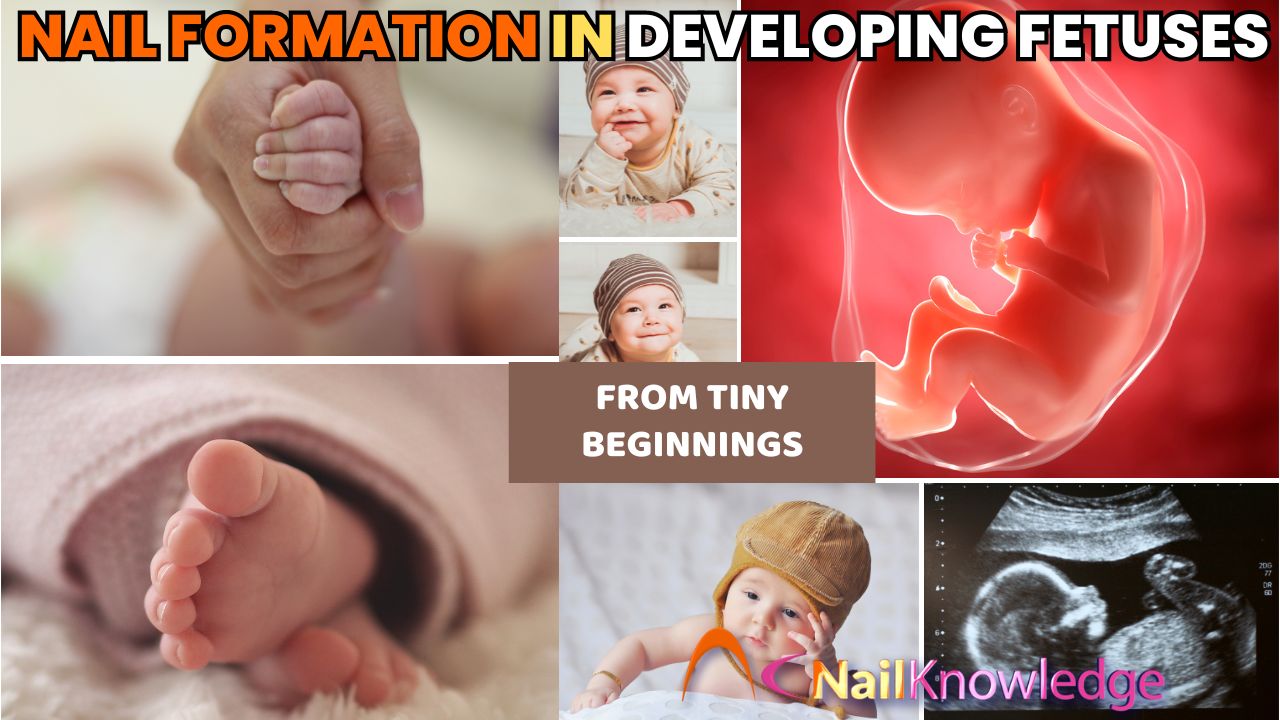From Tiny Beginnings: The Fascinating Journey of Nail Formation in Developing Fetuses (A Fascinante Jornada da Formação das Unhas em Fetos em Desenvolvimento)
Ever wondered how those tiny fingernails and toenails come to be on a developing fetus? It’s a fascinating journey that begins long before birth. In this article, we’ll delve into the intricate process of nail formation in the womb. Get ready to be amazed by the hidden world of fetal nail development, where perplexity and burstiness intertwine to create these essential yet often overlooked appendages.
O projeto: Noções básicas sobre aparelhos para unhas
Before we dive into the fetal realm, let’s start with the basics. Nails, those handy protectors at the tips of our fingers and toes, serve a myriad of purposes. They shield our delicate digits, aid in everyday tasks, and even contribute to our sense of touch and dexterity. But how do they form in the first place?
The nail apparatus comprises the nail plate and several surrounding structures: the nail matrix, nail bed, proximal nail fold, and hiponíquio. Think of it as a complex construction project unfolding in the tiniest workshop imaginable. Each element plays a crucial role in crafting the final product – your nails.
O início da jornada: Formação das unhas fetais
Now, let’s step into the fetal world, where the magic of nail development unfolds. The story begins around the 8th week of gestation, when the first signs of nail formation make their appearance. This is the moment when cells start to differentiate, marking the beginning of a remarkable journey.
At this early stage, a rectangular thickening of the epithelium appears on the dorsal surface of the developing digits. It’s known as the “nail field,” bordered by four grooves. These grooves resemble arched borders, with each one continuing the adjacent one. The proximal groove, the deepest of them all, takes on a transverse direction, with the apex located toward the digit’s midline.
Surprisingly, fingernails seem to develop this feature as early as 7 weeks of gestation, while toenails are a bit more camera-shy and aren’t yet recognizable. The distal groove, shallow at this point, separates the nail field from the epidermis on the volar surface of the fingers.
A fase das unhas postiças
Around the 9th week, a remarkable transformation occurs. The nail field in the fingers enlarges and adopts a dome-like shape, raising the prominence of the proximal groove. It’s like the early stages of a construction project where the foundation is being set. Interestingly, this gives the nail complex a “clubbed nail” appearance, but don’t be fooled – this is just a transient phase.
Na 11ª semana, o campo ungueal dos dedos dos pés finalmente decide fazer sua estreia, com o equivalente ranhuras de pregos. Entretanto, as unhas dos pés adotam uma abordagem diferente, optando por um formato mais retangular, com o lado mais longo perpendicular à direção dos dedos. Aqui, os sulcos laterais da unha são notavelmente mais curtos do que o sulco proximal, especialmente nos dedos dos pés 2-5.
A complexidade crescente
As fetal development progresses, the nail field in fingers undergoes further changes. By the 12th week, the nail field’s height starts to decrease, and the proximal groove deepens and narrows. It’s as if the building is starting to take shape, with the walls of the nail matrix rising to create the foundation for the nail plate.
Around the 16th week, the nail plate finally emerges from beneath the proximal nail fold. It appears as a semi-circular, flat structure with a smooth surface. Proximal and parallel to the distal groove, a new feature emerges – the distal ridge. In this early stage, the ridge is somewhat inconspicuous, sporting a blunt border.
Enquanto isso, as unhas dos pés estão seguindo seu próprio cronograma. Com 18 semanas, a placa ungueal começa a se mostrar e a crista distal se torna perceptível. Ambas as estruturas das unhas dos pés se assemelham àquelas observadas no estágio de 12 semanas de desenvolvimento dos dedos.
Unhas adultas em formação
Avançando rapidamente para a 25ª semana, testemunhamos os estágios finais do desenvolvimento das unhas fetais. Nos dedos, a placa ungueal continua a crescer, assemelhando-se agora a uma estrutura arqueada que cobre aproximadamente metade do campo ungueal. A crista distal, que ganhou nitidez e altura, torna-se o ponto focal.
At this point, the distal groove widens and becomes shallower, while the lateral grooves are nearly concealed by the evolving nail plate. It’s as if the finishing touches are being added to our construction project, bringing us closer to the familiar adult-like nails we know.
Conclusão
A jornada da formação das unhas no feto é uma narrativa cativante de desenvolvimento, transformação e crescimento. Desde o aparecimento inicial do campo ungueal até o surgimento da placa ungueal e da crista distal, cada estágio é marcado por mudanças intrincadas que culminam na criação das nossas úteis unhas das mãos e dos pés.
So, the next time you admire your nails or help a newborn trim theirs, remember the incredible journey that took place long before birth – a journey filled with perplexity and burst

